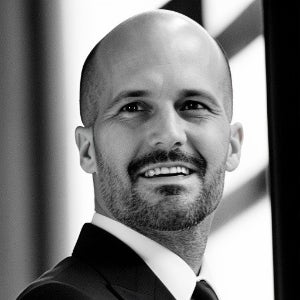How You Can Close The Pay Gap On #EqualPayDay Equal Pay Day is a commemorated annually to bring awareness to the wage differences between men and women for the exact same jobs.
Opinions expressed by Entrepreneur contributors are their own.
You're reading Entrepreneur South Africa, an international franchise of Entrepreneur Media.

Equal Pay Day is set on the day in the year when a woman would have finally caught up with her male contemporary's salary earned in the previous year. As this changes each year, depending on the wage gap difference in a particular year, and in a particular country, the commemorative dates for each country are not the same.
"While the wage gap has historical and socio-economic implications, acknowledging this date brings awareness to the disparity in wages between men and women as a first step to making change possible," says Dr Linda Meyer, career and educational specialist at Boston City Campus & Business School.
According to the 2018 World Wage Gap Report by the World Economic Forum (WEF), South African women earn around 28% less than their male counterparts. This means that, in order for a woman to earn the same as a man in the same position, she would have to work 212,2 days extra in the year, making 12 April the "official' #EqualPayDay in South Africa. This is despite the fact that it is law in South Africa mandates equal pay.
Wage disparity across the world
The day was commemorated in America 200 days into the year on 2 April this year (where women earn 72% less than a man for the exact same job. Britain, where the gap was 13.7 percent this year (where women earn 86.3% of their male counterparts), has established Nov 10 as their Equal Pay Date Day for 2019 with the rationale that this is the date when women begin working effectively "for free" when compared to men, based on the disparity in annual pay.
"Wage disparity is a historical issue which stretches across all countries of the world to different degrees," says Meyer.
According to the World Wage Gap Report, although these disparity figures are changing and the wage gap is closing, if current trends continue then parity will be reached in 135 years in Sub-Saharan Africa, 61 years in Western Europe, 70 years in South Asia, 74 years in Latin America and the Caribbean, 124 years in Eastern Europe and Central Asia, 153 years in the Middle East and North Africa, 171 years in East Asia and the Pacific, and 165 years in North America.
How you can close the gap
1. Support with childcare: on-site creche facilities allows a working mother to save time and money plus have peace of mine. This is provided at certain South African companies such as M-Net and Multichoice, Nedbank, Liberty Life and Discovery Health.
2. Flexibility: digitisation can be used to transform the workplace, enabling parents to accommodate looking after their children by working at a distance and allowing people to work flexible hours in order to accommodate taking/fetching kids.
3. Implementing Gender Neutral Leave: South African maternity leave is 120 days versus paternity leave of 3 days. Looking at introducing gender neutral leave would be a starting point to overcoming the issue of women being perceived as being less valuable due to their domestic responsibilities as the primary caregiver.
4. Role of educational Institutions: educational institutions can create opportunities to explore gender bias and how this impacts on the workplace, creating a culture where people are more conscious of how to reverse the wage disparity. This can include conversations around implementing strategies such as having specific targets and quotas for female employees and transparency of different salaries.
"Working towards gender parity in the workplace can be accelerated by creating awareness of the responsibility of policy-makers and other stakeholders. By decision makers taking further and frequent action, the workplace can be galvanized into narrowing the wage gap.
While equality is significant in terms of human rights, it will also provide greater diversity in the workplace which is becoming more and more vital in order to effectively navigate the age of digitisation," says Dr Meyer.
It's time women were paid what they are worth," concludes Dr Meyer.
To work out how much a man or woman would be earning on your salary, visit GenderGap.AFRICA to use a tool designed to help users calculate the gender pay gap in any African country.












